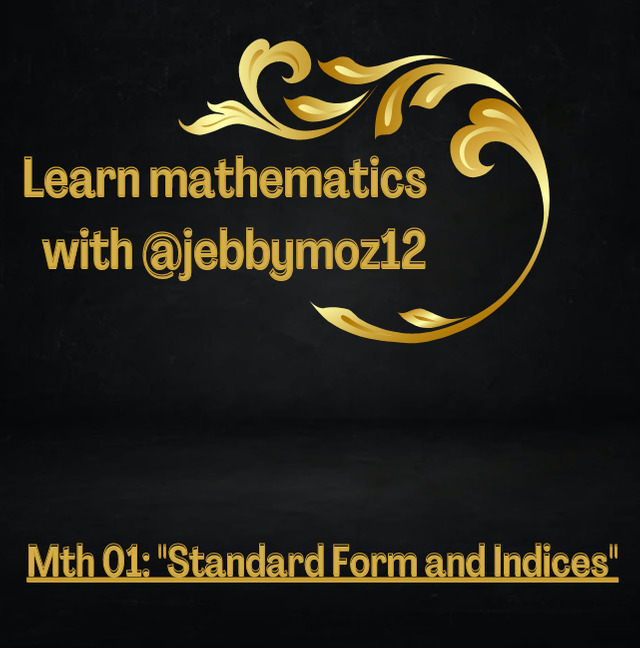Mth 01S1: Standard Form and indices

Created using canva
Greetings to you all. It's a new day. My mathematics tutor said we should face our problems everyday so as to find solution to some if not all.
express any whole and decimal number in standard form
express numbers in index form
state and apply laws of indices. I'll be focusing on standard forms for now.
Expressing whole numbers in terms of powers of 10 |
|---|
N/b: The big digits is called a whole number while the small digit on top of the big digits is called *power. If an whole number is raised to the power of any number, you'll multiply that whole number with respect to that power.
Example:
1= 10⁰ or 10⁰=1
The whole number, 10 is raised to the power of 0 which means nothing is multiplying. In that case, it is important to note that any number raised to the power of zero is one.
50⁰=1
1000000⁰= 1
700⁰= 1
Now in the case of where the whole number is raised to power 2, you'll multiply that number twice. If it's raised to power 3, you'll multiply it thrice and not with the power.
Let's express the following numbers in powers of 10...
10= 10=10¹
100=10×10 = 10²
1000 = 10×10×10 =10³
10000=10×10×10×10=10⁴ and so on.
- Express 100,000,000 in powers of 10.
Solution |
|---|
Counting the zeros, we have 8 zeros. So the answer would be,
10⁸
- Express 1,000,000,000,000 in powers of 10
Solution |
|---|
10¹²
Expressing whole numbers powers of 10
You'll count the numbers from your left up till the second number as zeros and then you put a decimal point since you were counting it from your left in between the first and second number. Counting from left results in positive powers while counting from right results in negative powers.
N/B: If you're given whole numbers like these, you're counting from the left and stop counting once you reach the second to the last number from your left. Example; 754361= 7.5×10⁵.....✅ N/B; In a situation where you're given this number [0.00235], you'll count from your right after the decimal point down to the first non-zero digit which is 2. After counting, you'll have 3 digits which would serve as your power. The power when counting from your right is negative. You then place a decimal point in-between the first non-zero digit and the second. 2.3×10-³✅ Examples:
Decimal numbers expressed in terms of powers of 10. Where you're given a decimal number [0.0044], you'll count from your right after the decimal point down to the first non-zero digit which is 4. After counting, you'll have 3 digits which would serve as your power. The power when counting from your right is negative. You then place a decimal point in-between the first non-zero digit and the second which is 4.4 ×10-³
I'll make it practical on Saturday, solve lots of problems using pictures and then make an introduction of indices. |
|---|
| Club Status | #newcomer |
|---|---|
| Steem Exclusive | ✅ |
| Plagiarism Free | ✅ |
| BOT Free | ✅ |
| Voting CSI | 22.8 ( 0.00 % self, 177 upvotes, 119 accounts) |
| Verification date: | 2022-12-27 |
| MOD's Observations/suggestions |
|---|
| Thank you for sharing your quality post with us, we really appreciate it, always in lucky success 👍 |
 Click Here
Click Here